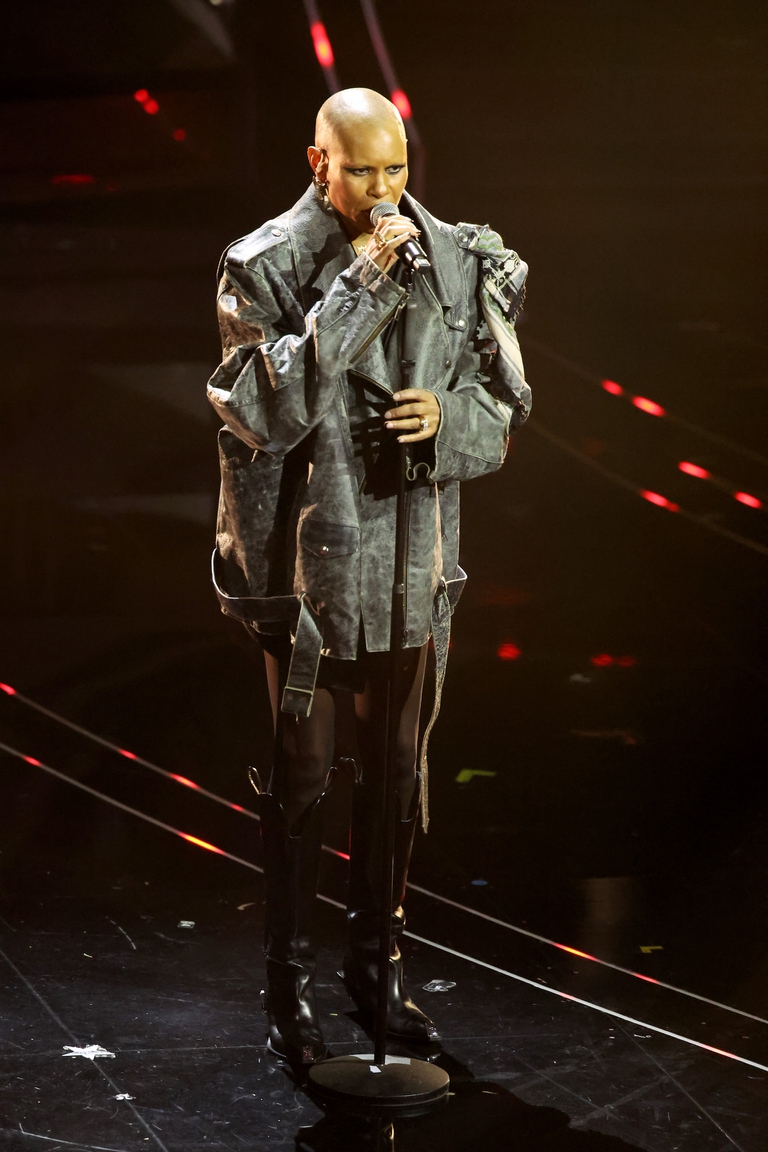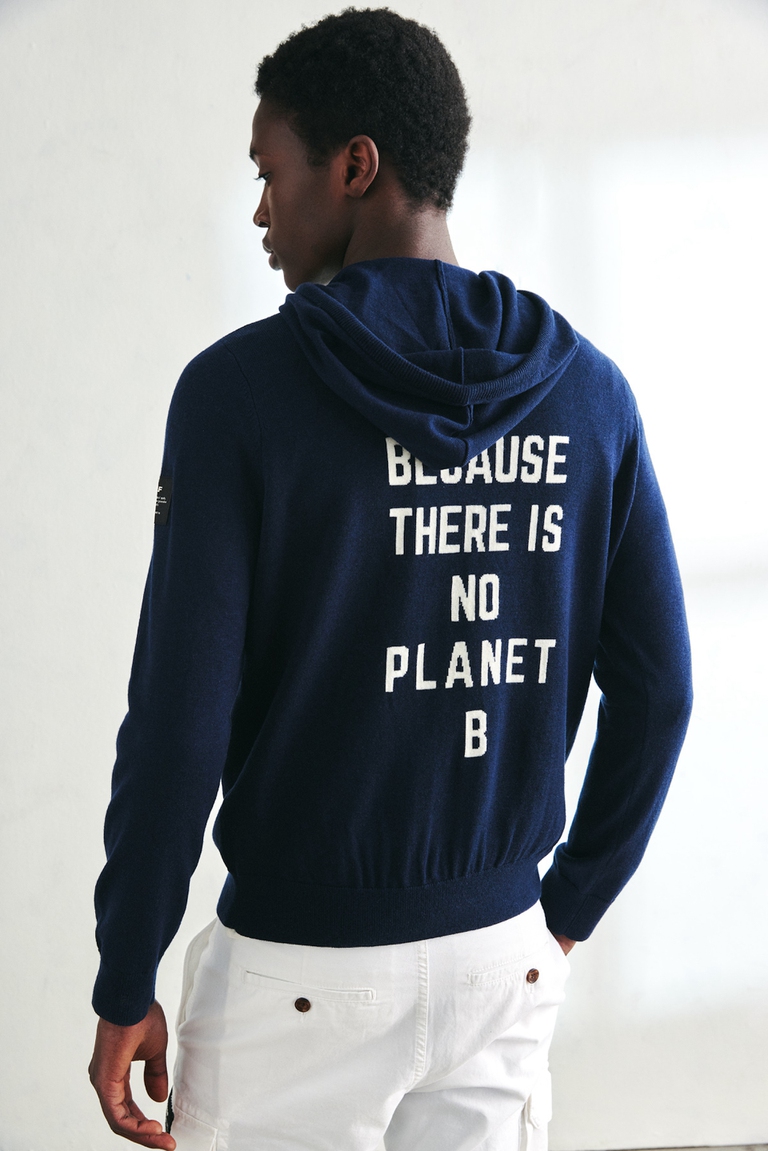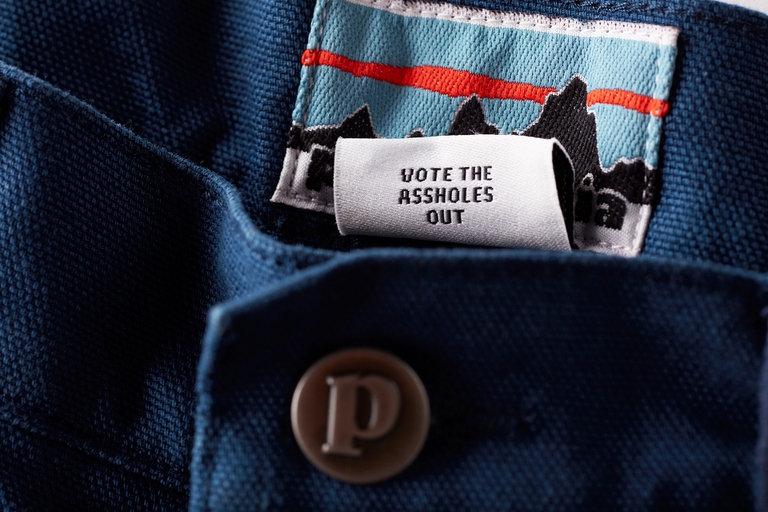https://www.lifegate.it/wearable-activism
- |
- We talk about wearable activism when social and political messages become the protagonists of clothes and accessories, or guide their design.
- Wearing symbols, colors, accessories or uniforms recognizable as belonging to a specific movement is a way to recognize yourself and support a common cause.
- Wearable activism can originate "from below", i.e. from the use of certain clothes and accessories by a group of people, or "from above" when the designers themselves include political messages in their collections.
Fashion and clothing have always played a significant role in social and political movements that have punctuated history:just think of clothing or signs of recognition of subversive movements for example.The intersection between fashion and political activism throughout history it has allowed us to express ideologies, challenge norms and promote changes and this is because clothes and accessories can be powerful symbols of political ideologies.Activists often use specific colors, slogans and symbols that make beliefs and affiliations clear:they are all examples of wearable activism.In moments of intense social and political ferment, such as what we are experiencing between wars, climate changes and intense discussion on civil rights, messages and positions use all the channels at their disposal to emerge, including clothing.
Wearable activism:the tools that fashion gives to political protest
It will not have escaped many that during the last Oscar ceremony on the looks of some stars like Billie Eilish, Mark Ruffalo And Ramy Youssef have appeared red pins depicting a hand with a heart in the centre.Those pins pinned on clothes worth thousands of dollars were nothing more than an appeal, as silent as it was visually powerful, to give one's support to an association, My voice my choice org, which defends i women's reproductive rights in Europe.In support of the same cause in Italy Skins he wore, during the Sanremo festival, one keffiyeh pinned on the jacket:created by the Palestinian refugee brand Sep Jordan, the traditional Arab headdress has over the years become a symbol of support for the Palestinian cause.Important red carpets, such as those of the Oscars, the Golden Globes or the Met Gala, where the guests' looks are commented on and scrutinized by the press, are an excellent sounding board for expressing one's political and social ideas, or associating with a movement, even without speaking.In 2018 it was not unusual to see other pins pinned on the star's evening dresses, this time black and with the words "Time's up":a call to collective action following reports of sexual harassment in Hollywood and the outburst of #MeToo movement.

Feminism and anti-racism also pass through clothing
The day after the inauguration of Donald Trump as president of the United States, on January 21, 2017, thousands of women marched through the streets of Washington in Women's march to protest against the newly elected president, with his notoriously misogynistic positions and rhetoric.The march was a huge success also because of the pussyhat, pink hats with cat ears worn by thousands of demonstrators and instantly became a symbol of the fight for women's rights.In the same year Missoni he made his models wear pussyhats on the catwalk and put the hat into production.The designer specialized in wearable technologies Melissa Coleman in 2016 he wanted to give one of his accessories a specific connotation of political activism:with its Political Lace, an elegant detachable collar incorporated with an LED device that flashes every 7.5 minutes, the intention is to focus attention on the frequency with which women, even today, they die in childbirth.
During the March on Washington in 1963 – the one during which Martin Luther King gave his famous speech – all African American women chose to wear denim garments, unisex overalls and to bring the natural hair to show their resistance to what society would expect them to wear and to the norms of white behavior and dress.Furthermore, for African American women, wearing African-themed clothing or accessories was a way to fight back silently for equality.Black beret, dark sunglasses and black leather jacket adorned with pins was the uniform of the movement Black Panther and his supporters:this type of clothing openly symbolized a challenge to the standards and norms of white clothing, which followed the logic of respectability.Wearing a black beret in the 1960s meant supporting the Black Panther movement.In the Italian panorama the intersectional feminist battle è symbolized by bright fuchsia, chosen by Non una di meno as its reference shade and worn by demonstrators during the demonstrations November 25th, International Day for the Elimination of Violence against Women, and8th of March, International Women's Rights Day.
Wearable activism is also made up of messages to wear
Activists often use wearable activism to draw attention to their causes:slogans, images and messages printed and embroidered on clothing can serve as wearable form of protest, helping to raise public awareness.A rather famous example dates back to 2021 when the then congresswoman for the American Democrats Alexandria Ocasio-Cortez she showed up on the red carpet of the Met Gala, one of the most significantly relevant events in the fashion system, with a white dress with red writing “Tax the rich”.Sensational demonstrations aside, however, the tools that fashion gives to protest and political representation are many.The use of a pre-established dress code is in fact useful for building a collective and public visual identity on social and political issues, it is a tool for making a movement visible.

The wise The good citizen by Russell Dalton, in an attempt to study the concept of citizenship in the twenty-first century, connects the variables of engaged citizenship by analyzing the role of the fashion industry in political and social involvement and activism.Fashion is in fact one platform to convey political messages and a tool to bring about change.Just think of slogans like “The future is female" or “We should all be feminists” which have gone from being the uniform of feminist assemblies to iconic looks of the fashion shows of large luxury houses such as Dior.If it is true that fashion is a reflection of society, it is equally true that subverting certain clothing norms or giving voice to certain messages has a response in society.Topics such as right to abortion made explicit by the claim “My body my choice”, or the concern about climate change summarized in “There is no planet B” that Ecoalf prints on t-shirts and shoppers, are increasingly at the center of public debate because they are continually threatened.The fact that designers choose to print or embroider them is also a way of doing activism.Just as it is a way of activism to hide messages in one's clothing, which he did Patagonia in 2020 by changing the label of a specific product:a pair of blue shorts where, instead of the size, the writing appeared “Vote the asshole out”.It was the last months of the Trump administration.

Subverting the norms:the example of gender fashion
Activists today are using clothing to challenge traditional gender roles and promote inclusiveness and equality.Indeed, fashion has the great power to subvert cultural norms and expectations, acting as a form of resistance against oppressive systems.Just think of the ever-growing success of the collections genderless And genderfluid, who reject the traditional binary categorization of what is considered masculine or feminine.A huge watershed in this sense was the advent of Alessandro Michele from Gucci.In the years in which it was led by the designer, i.e. from 2015 to 2022, the luxury house brought the political rejection of the gender binary to the attention of the general public and on the most famous red carpets.In fact, fashion allows individuals and communities to express one's identity and cultural heritage:wearing clothes associated with a particular cause or movement is one path, but so is dressing to advance claims of belonging or denial, as in the case of rejecting the gender binary.Challenging or subverting dress codes is one way to protest restrictive laws or policies:the mere act of dressing a certain way can become a form of civil disobedience.
